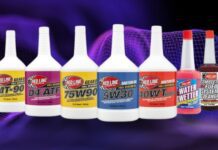Putting your customer’s request from the idea they present to reality requires a thorough discussion and evaluation of options. Plastic injection mold is an efficient way for making plastic parts, yet there are different angles to consider before opting for the correct approach that’s going to ensure a steady production and a happy customer.


From resin to surface design needed for appearance and functionality, there are multiple options to choose from so I went to injection molding market leaders Wunder Mold to learn more about this method. Here are some tips they showed me:
Choosing the Right Surface
The surface is important not only for the visual aspect, it also reflects previously made decisions on the volume of production and the material. Depending on the material you choose, the surface finish will also vary, and it is crucial to determine the correct surface finish early in the planning because it will affect the rest of the design.
Texture also plays a big role and they are used to create undercuts and blur parting lines. Besides aesthetics and style, texture is important for practical reasons too. It can affect the grip and how well the paint sticks to the surface, also it is important to consider to make room for gases to leave during the injection.
Thickness
It is important to keep the thickness level constant during the process. Any variation could negatively affect the flow. It is almost impossible to keep a steady stream, but a range between 2-3 mm should be fine.
Drafting
Drafting is a process that releases the parts from the injection mold. To ensure a steady flow, without having to force their way out, but also to increase the lifespan of the tools, you need to adjust the correct angles of drafting. These should range from 1 for mold without a texture to 3 degrees for a fully textured mold. It is always good to have more draft as it allows you to remove the part from the mold, but also plays a major role in fast injection molding where parting lines, quality and tool utility need to be maintained.
Choosing the Right Material
There are various factors to be considered before choosing the right resin. First you need to think about the final product, its use and the environment it will be exposed to. Should the part be firm, or should be elastic? Is it going to be exposed to extreme temperatures?
Safety should also be added to the equation. New and expensive is not always the best solution. You want to maintain quality without having to increase expenses. It is best to find an experienced engineer who knows their materials, present your idea, and let them decide which materials are going to best fit your needs.
Flow of the Mold
To design a part the way it needs to be you need to simulate a constant flow during the process. Similar to drafting, a good, thought-through flow will enable quality production. There are a few elements that can be adjusted in this simulation: finding the best spot for the gate, allocation of water and runner layout. The more complex the part is, the more preparation and depth of the simulation is needed.
Coatings and Finishes
Ideally, you want to minimize these. Coatings and finishes are used to add a texture to the surface to reduce its wear. The problem is that finishes prolong the production and also add to the overall cost, depending on the level of detail. The goal is to balance between time, resources and the minimum amount of complexity that would allow for cost-efficient production and sufficient quality.

























